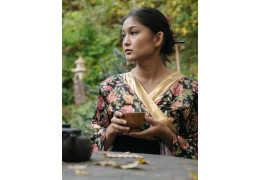In winter, natural herbal teas help relieve cold symptoms such as coughs, sore throats and fevers. Herbs such as thyme, rosemary, sage and peppermint offer benefits for the respiratory tract and boost immunity. Discover our recipes for effective cold infusions.
Latest posts
-
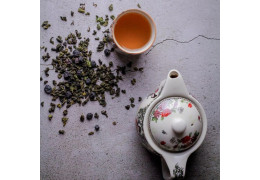 Discover oolong teas: origin, taste, benefits, ...Read more
Discover oolong teas: origin, taste, benefits, ...Read moreBlue tea, or oolong, is a refined tea halfway between green and black tea. Lightly oxidized, it offers smooth, bitter-free infusions, with aromas that vary according to the oxidation. Native to China and Taiwan, it is drunk at 80°C and can be reinfused several times. This tea is also appreciated for its relaxing benefits and low theine content.
-
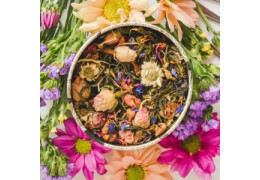 Herbal infusions and their benefits for winterRead more
Herbal infusions and their benefits for winterRead moreWinter brings cold, fatigue and colds, but also heavy meals to digest. To support your health, there's nothing better than a homemade herbal tea. Chamomile, lime blossom, sage or peppermint, these plants soothe the throat, aid digestion and strengthen the immune system. Whether you're looking to relax or digest better, discover the benefits of winter herbal teas.
-
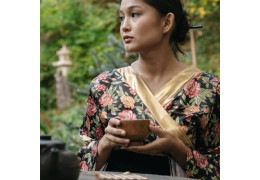 Hojicha, Genmaicha and Gyokuro: 3 green teas from JapanRead more
Hojicha, Genmaicha and Gyokuro: 3 green teas from JapanRead moreJapan offers a wide variety of fine teas, including Sencha, Matcha, Hojicha (roasted tea) and Genmaicha (roasted rice tea). Each tea offers unique flavours, from toasty to mild umami. Low in caffeine, these teas are both delicious and healthy. Discover them for a true Japanese experience.
-
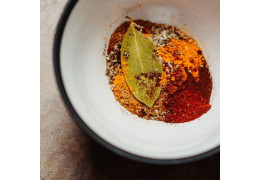 Ayurveda: 8 rituals to take care of yourself this winterRead more
Ayurveda: 8 rituals to take care of yourself this winterRead moreAyurveda is an Indian medicine that balances the doshas to maintain health. In winter, rituals such as tongue scraping, yoga and oil massage are essential. These practices support immunity, digestion and promote relaxation. Adopt these routines for daily physical and mental well-being.
-
 Our selection of recipes for a delicious Christmas teaRead more
Our selection of recipes for a delicious Christmas teaRead moreThe festive season is synonymous with Christmas teas, with their comforting flavors of orange, cinnamon and spices. Traditionally based on black tea, these gourmet recipes come in green, white or rooibos teas, with hints of vanilla, chocolate or citrus. Each cup is perfect for enjoying or giving as a Christmas gift.
-
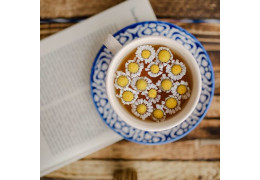 Discover our autumn herbal teasRead more
Discover our autumn herbal teasRead moreAs winter approaches, there's nothing like a comforting herbal tea. Plants such as sage and verbena, or spices like cinnamon and ginger, offer warmth and well-being. Our autumn infusions, with their varied flavors, support digestion, detox and relaxation. Discover our organic blends to enjoy cocooning moments while taking care of your health.
-
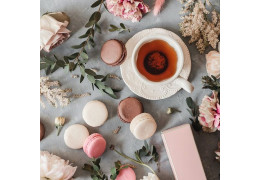 English teas for a 100% British drinkRead more
English teas for a 100% British drinkRead moreTea has been an English tradition since the 17th century. Black teas such as Darjeeling, Assam or Earl Grey punctuate the day, often accompanied by milk. These teas, appreciated for their rich aromas, are drunk from morning to Tea Time. For best quality, opt for loose tea.
-
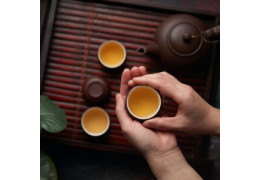 Antioxidants in green tea: health benefitsRead more
Antioxidants in green tea: health benefitsRead moreTea, originally from China, is the second most widely consumed beverage in the world. Rich in antioxidants, notably polyphenols, green tea and matcha are particularly beneficial to health. They help combat oxidative stress, support concentration and can contribute to weight loss. To benefit from their virtues, choose quality loose green tea.
-
 How do I grow a tea plant at home?Read more
How do I grow a tea plant at home?Read moreGrowing tea in your garden is possible with the Camellia Sinensis shrub, which produces beautiful leaves and flowers. It requires acid soil, regular watering and moderate exposure to the sun. In France, Brittany and the Atlantic coast are ideal for its cultivation. After harvesting, you can prepare your own home-made teas by drying or roasting the leaves.
-
 Our selection of detox and fragrant teas for autumnRead more
Our selection of detox and fragrant teas for autumnRead moreAutumn is setting in with its cold and fatigue, perfect for a cup of tea. For a detox effect, opt for green tea with notes of lemon or vanilla. Lovers of deeper flavors will appreciate black teas with cinnamon or chocolate. Discover our organic loose teas, ideal for cocooning moments this autumn.

